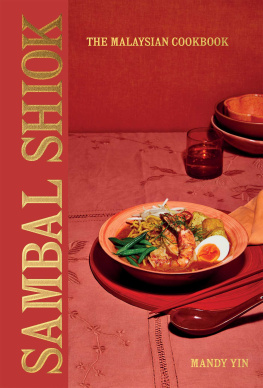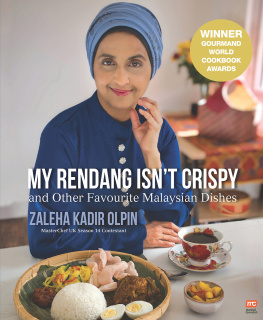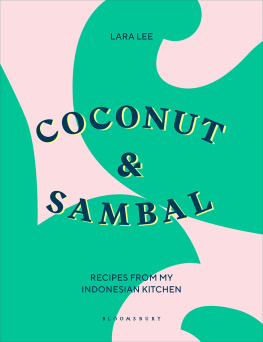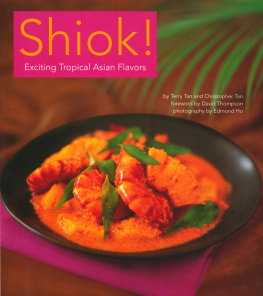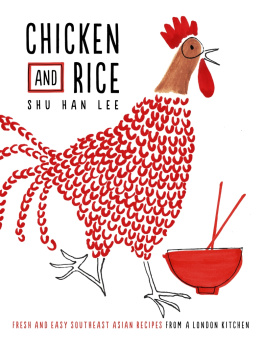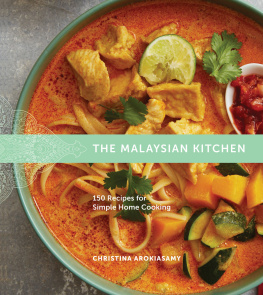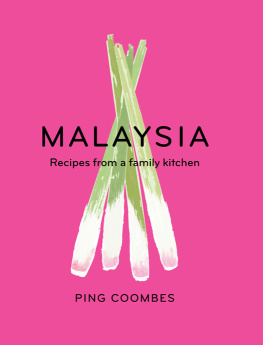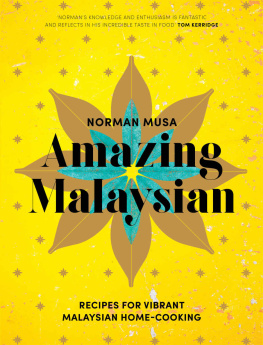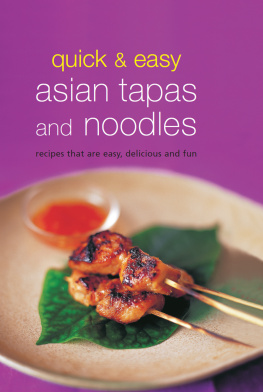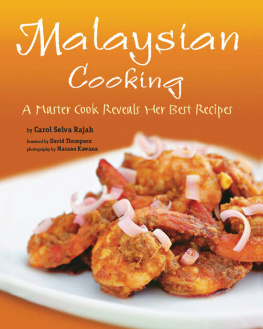

CONTENTS
MY MISSION IN LIFE IS TO INTRODUCE AS MANY PEOPLE AS POSSIBLE TO MALAYSIAN CUISINE.
The food of Malaysia is a result of the unique merger over centuries of indigenous Malay ingredients and cooking methods with external influences, adapting ingredients and techniques from countries such as China, India, Portugal, Spain, the Netherlands and even Britain. Many dishes delicately balance sweetness, sourness and saltiness, often marrying chilli heat and a hint of bitterness.
In this book, my aim is to highlight a cross-section of Malaysian cooking: Malay, Indian, Chinese, Peranakan and tribal Iban. Much like the food I cook at my London restaurant, Sambal Shiok Laksa Bar, I want to celebrate the diversity of the country and its people. This book showcases a selection of Malaysian-inspired recipes from snacks, pickles and salads, to noodle soups, rice dishes, curries and sweet delights. The recipes include many family stalwarts together with those that I have developed for the restaurant. They can be used for weekday family meals, dinner parties or celebrations. Malaysians love to celebrate any occasion and we dont need much of an excuse for a feast! At a family get-together, we like sharing food and it is perfectly normal to see a huge variety of stir fries, curries and stews served with as much rice as you can manage; snacks; fried noodles contrasted with refreshing salads; pickles, chilli dips and sauces, all served at once. Malaysian dishes are food for the soul and offer full-on, in-your-face, satisfying flavours.
These recipes are true to me, my experiences and my food memories. Several of my dishes are not what you may traditionally find in Malaysia but are firmly rooted in Malaysian flavours. All cuisine has evolved over decades and centuries. I like to think Im doing my forefathers and foremothers proud my ancestors from China who moved over to Malaysia and started doing their thing with the local ingredients and cuisine, generally mixing things up!
Typically, Malaysian meals showcase a variety of spicy, fried, braised, steamed and boiled meat and vegetables. Delicious and healthy fresh vegetables and a great variety of herbs are used to create colourful salads and mouth-watering dishes. Not all Malaysian dishes are chilli-hot but if you are looking to cook and enjoy spicy Malaysian dishes, you will find this cookbook useful. Once you have collected the basics of a Malaysian larder like shrimp paste, lemongrass, tamarind and coconut milk, anyone can cook a multitude of intricately layered Malaysian dishes in a home kitchen with ease.
There are fewer than a handful of specialist ingredients needed, with most of those used at the restaurant available in regular supermarkets. Only a small number of the recipes (such as laksa or prawn noodle soup) involve longer ingredient lists or are more time-consuming these would interest the more intrepid cook or someone who likes a challenge. I do not add artificial monosodium glutamate as a seasoning in any of my dishes (other than the small amounts already present in store-bought oyster sauce or chilli oil), as I believe Malaysian food is flavourful enough without its use.
You will find that the vast majority of the recipes are easy or, at most, require intermediate cooking skills. Some recipes may appear intimidating at first because of their relatively long list of ingredients, but the method will really be quite simple. Many dishes revolve around a rempah spice paste being blitzed up before simply being stir-fried or braised within a sauce. The rempah is where the magic happens the combination of ingredients within it and then frying it off with patience to allow its components to sing.
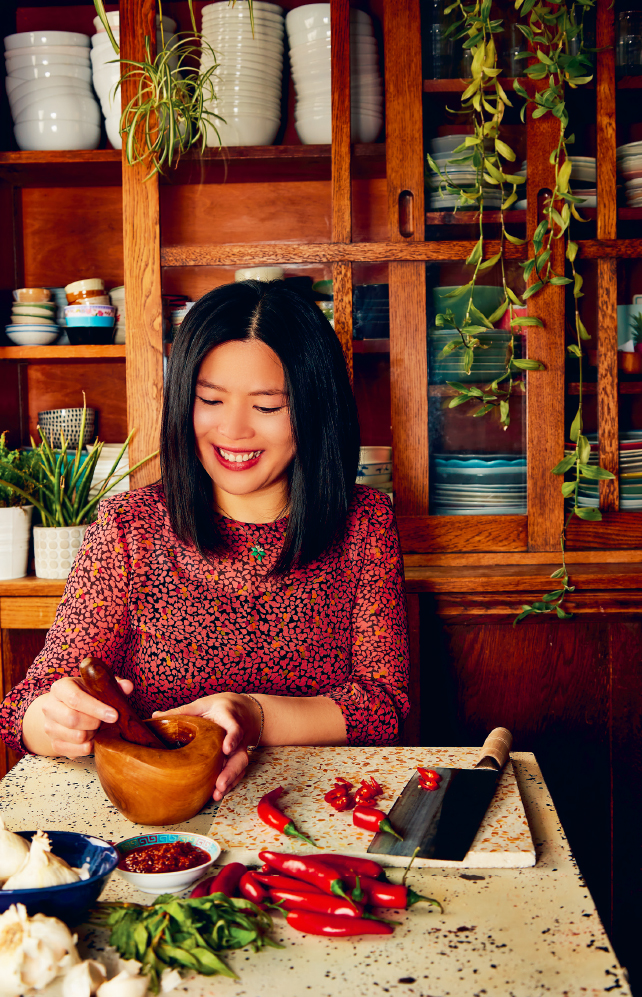
In this book, there are plenty of options for vegetarians and vegans, as well as those observing halal, dairy-free and/or gluten-free diets. Where necessary, I adapt my food to cater for these requirements, for example, where a recipe traditionally calls for shrimp paste, dried shrimp or pork, I have made an effort in my restaurant to adapt and develop recipes to remove those elements, coming up with vegetarian or vegan versions that are just as tasty. In my I have replaced shrimp paste with miso and tomato pastes, which results in a rich, tangy vegan broth instead.
Since starting my journey into the food industry in 2013, I have fed thousands and turned so many on to the possibilities and intricacies of Malaysian flavours.
Spicy, pungent, no-holds-barred flavours are my calling card. Having the restaurant has given me a voice to tell my story. Yes, we specialize in my both from a Peranakan Nyonya roster of recipes, but it has also given me the chance to shine a light on lesser-known dishes from Malaysia and to explore different regions or underexposed culinary cultures of the country.
My goal in life is to draw attention to the fact that Malaysian food is accessible and crying out for people to explore its variety. My greatest hope is that this book will inspire you to try cooking Malaysian food, to seek it out and eat it wherever you live and, ultimately, to travel to Malaysia to fully understand and experience the richness of its cuisine and culture.
For fellow Malaysians, I hope that you will find great comfort in these pages, as I did recreating nostalgic tastes while testing recipes and writing this book during the lockdowns of 2020s coronavirus pandemic.
WHAT IS SAMBAL?
Is it a pickle? Is it a condiment? A dipping sauce? It is all of them and more. Importantly, it is that special little je ne sais quoi that Malaysian cooks offer on the side of every meal, to add chilli heat for additional oomph to whatever dishes are on the table. Sambals are often made by home cooks in a large quantity and then stored for several weeks in the fridge in an airtight container.
Sambal variations are endless. In the case of an accompaniment to a laksa, sambals are quite commonly served in a small saucer on the side of the bowl or in a spoon perched on top of the noodles along with calamansi lime. Some people may like to stir the whole lot into the soup and noodles but the trick is to dab a little on each spoonful of noodles before it gets to your mouth! At the restaurant, however, as my signature laksa is already fiery by default, no sambal is served on the side.
WHAT IS SHIOK?
Shiok in Malay slang means a thing or an experience that is shockingly good.
So, sambal shiok means shockingly good sambal!
MANDY YIN
Malaysian food has an incredible variety as a result of the country being a melting pot of peoples and cultures, both past and present.
To understand Malaysian food, you have to understand how the country is made up. It consists largely of three races: Malays (60 per cent), Chinese (25 per cent) and Southern Indians (7 per cent), with the 8 per cent balance made up of many tribal indigenous peoples. Imagine the array of flavours and influences from just these four cultures. Then there are also influences from neighbouring Thailand and Indonesia. Malaysian cuisine is a fusion of all these cultures, where each culture has taken interesting features from the others and applied it to their own cuisine.
As a side note, I would say that I am of Malaysian nationality but I do not call myself Malay. Similarly, it is incorrect to refer to all Malaysian food as Malay, as I shall now explain.
Next page
